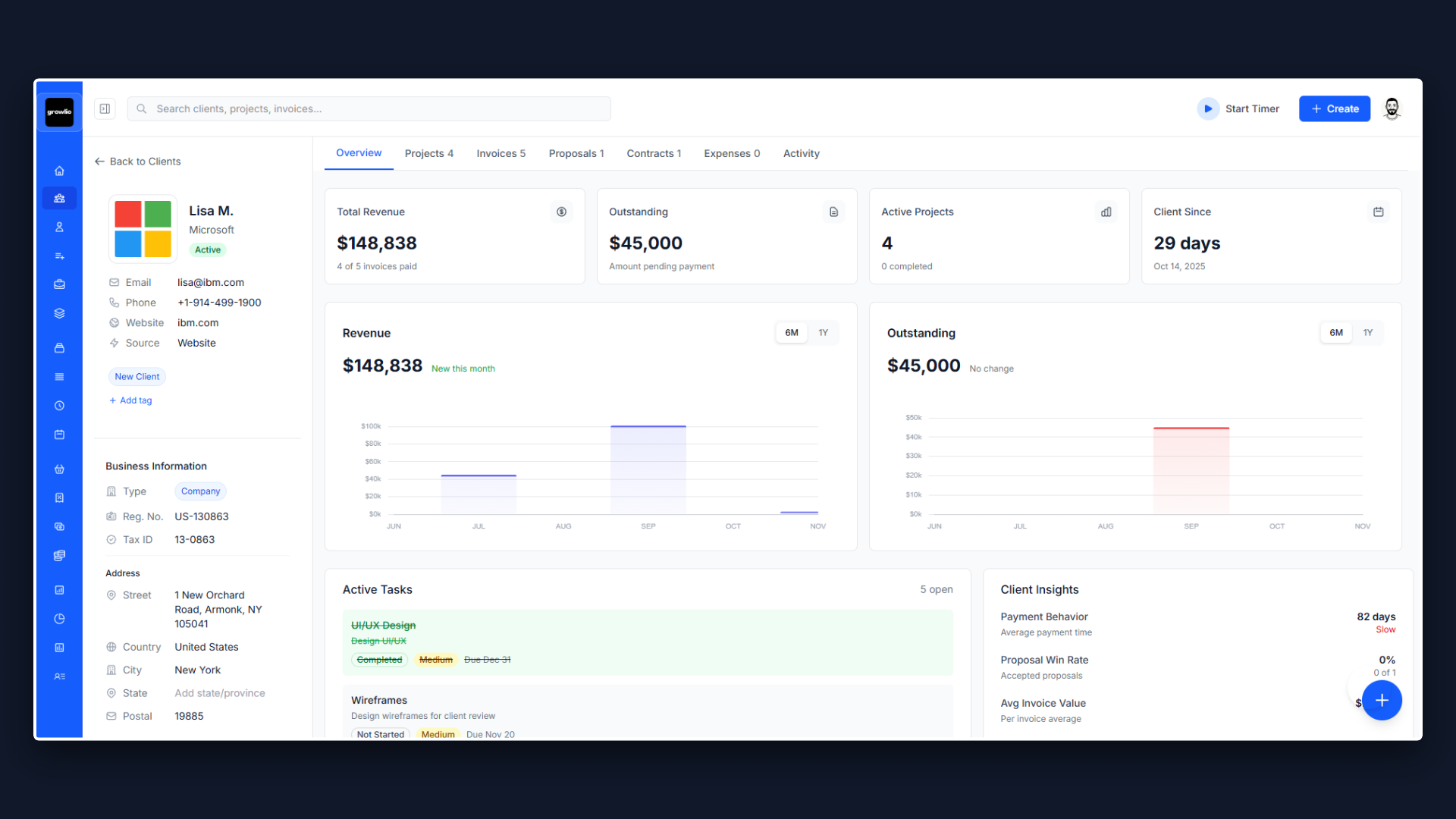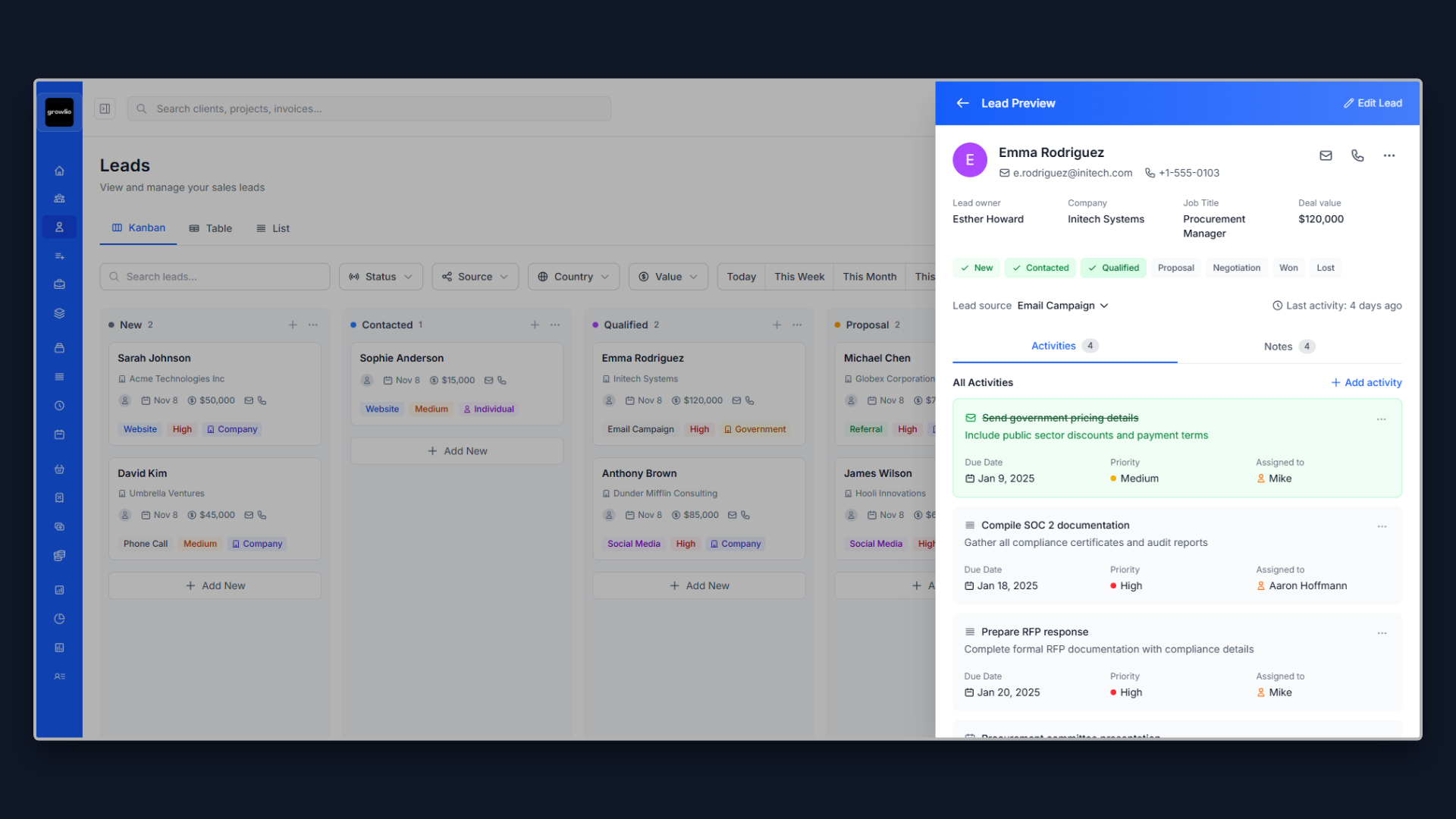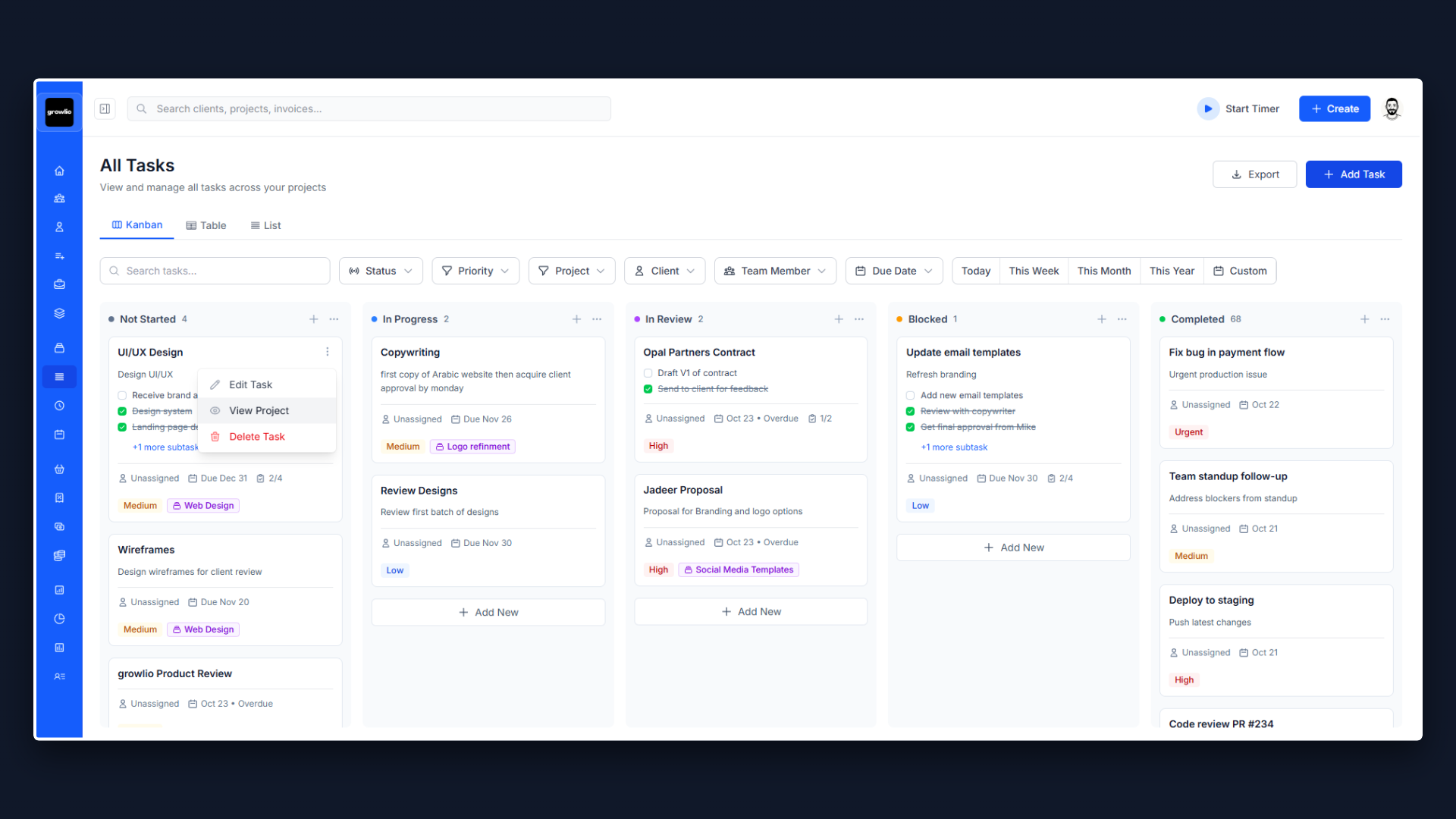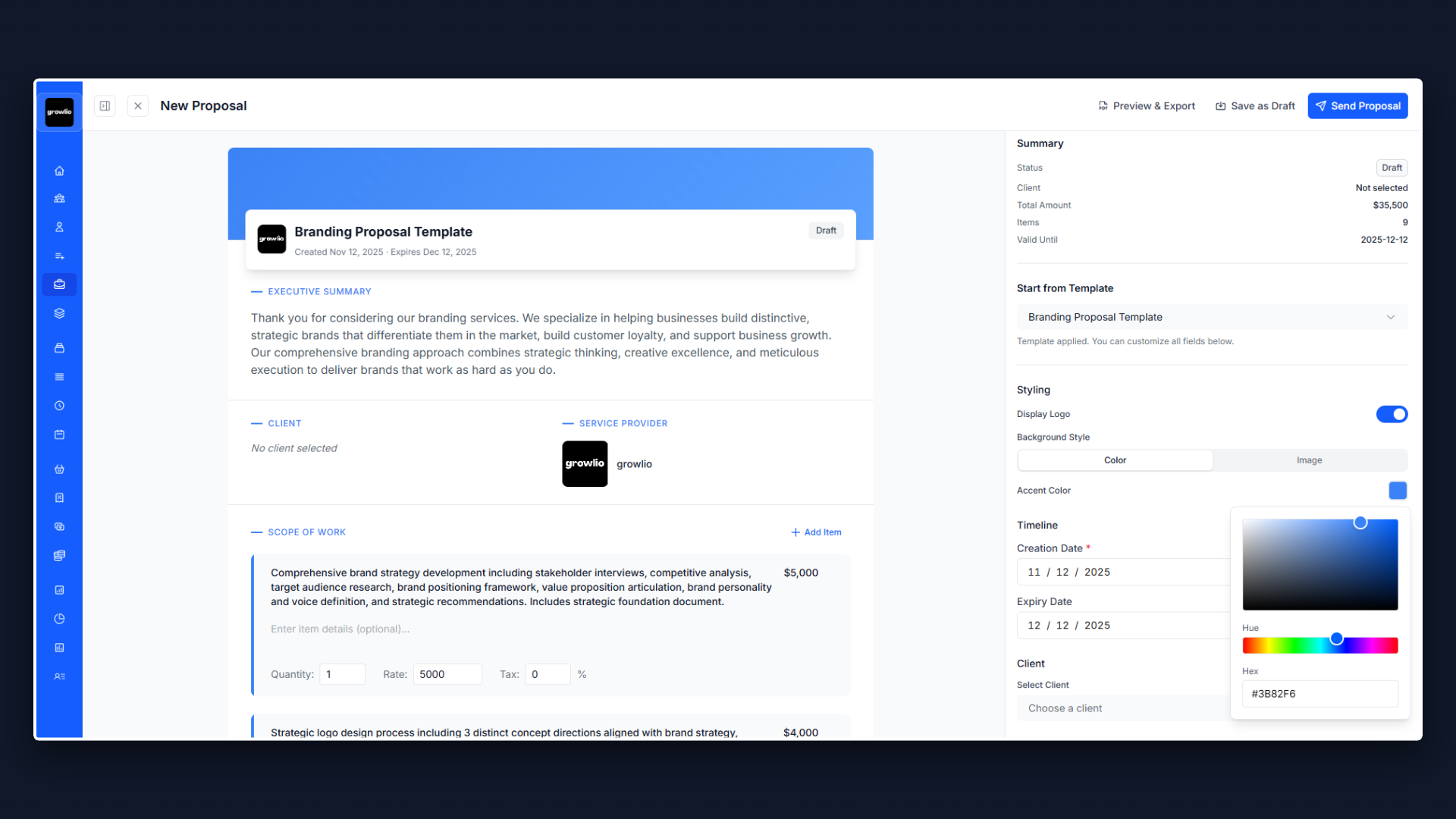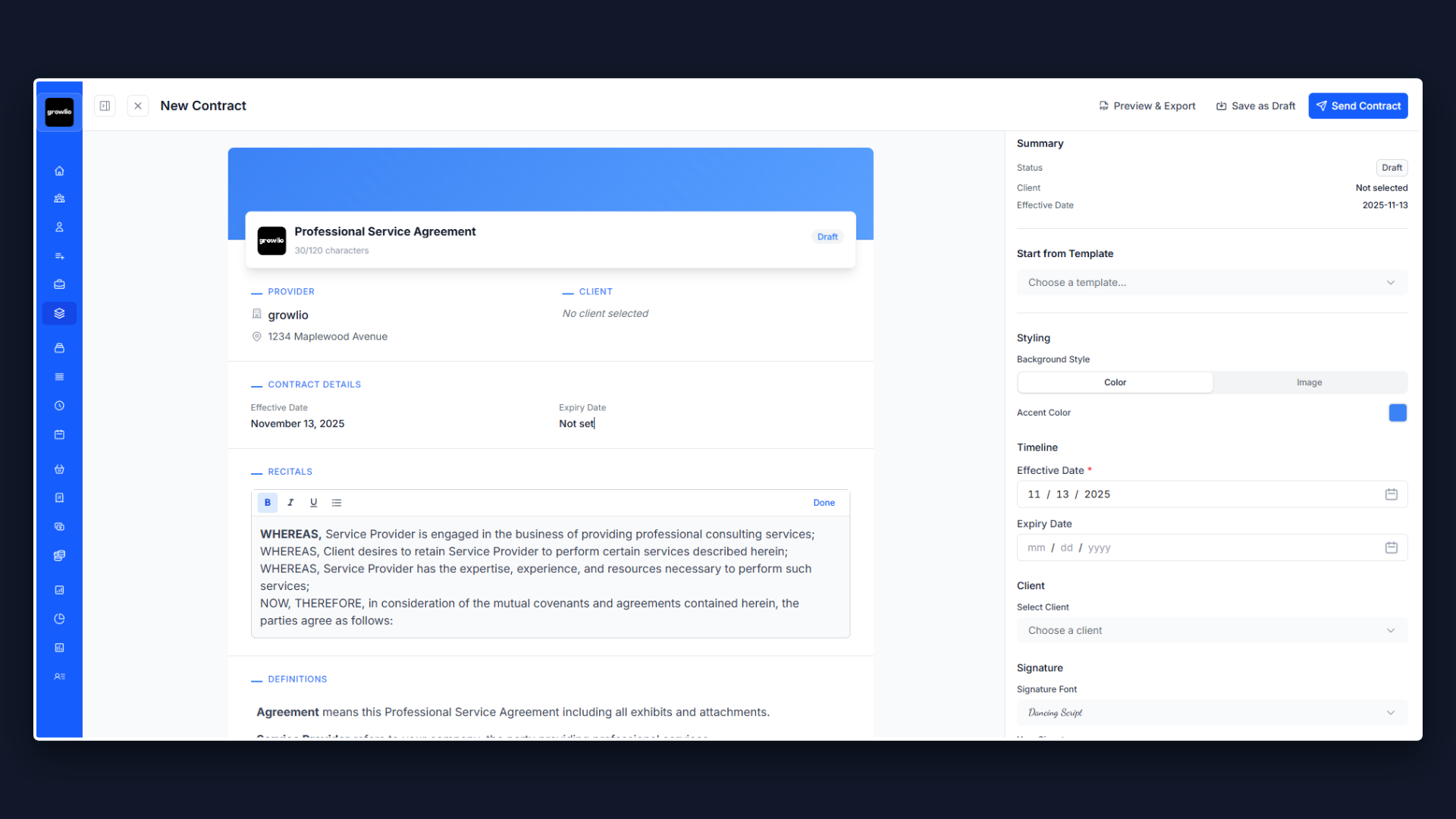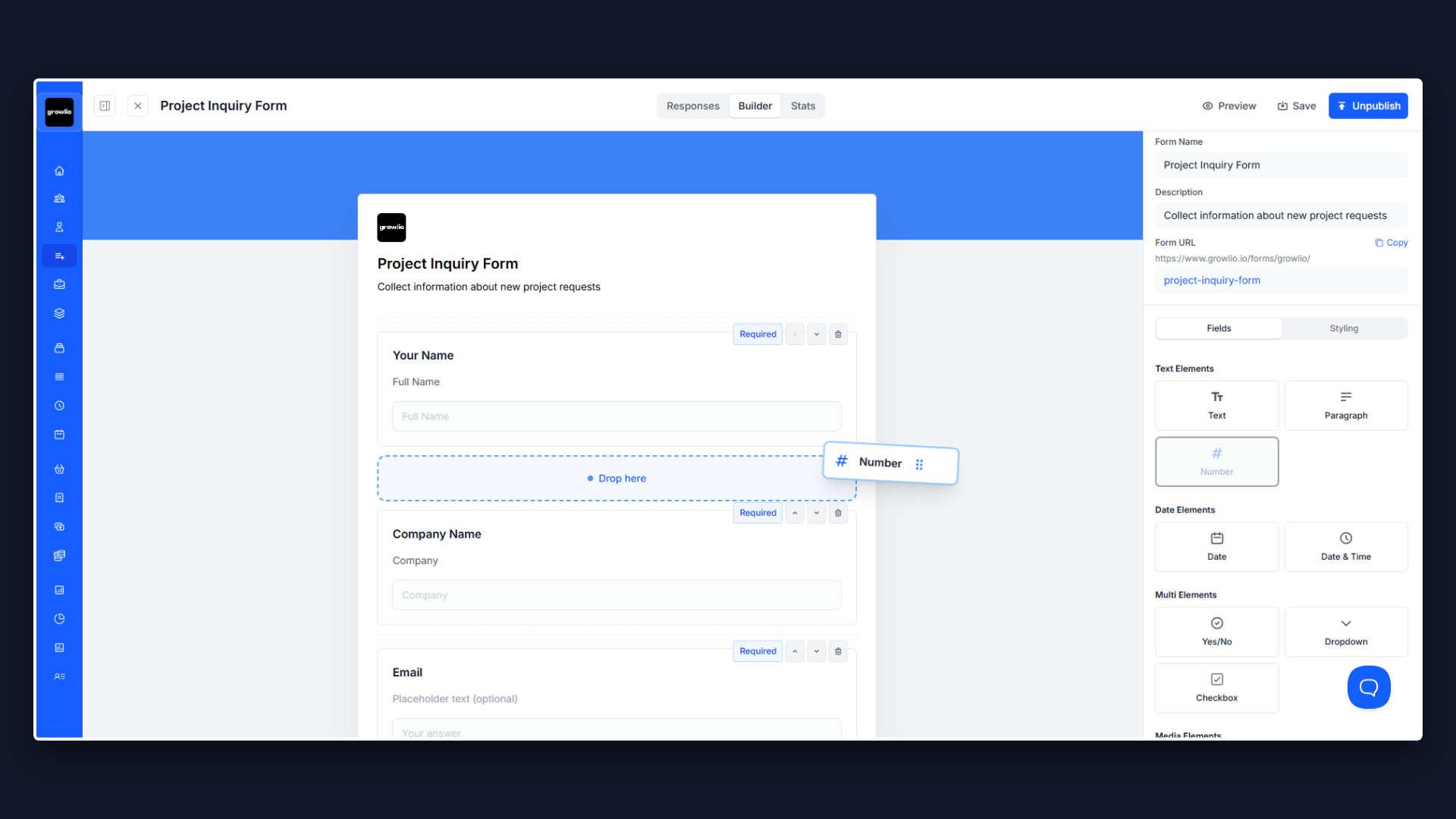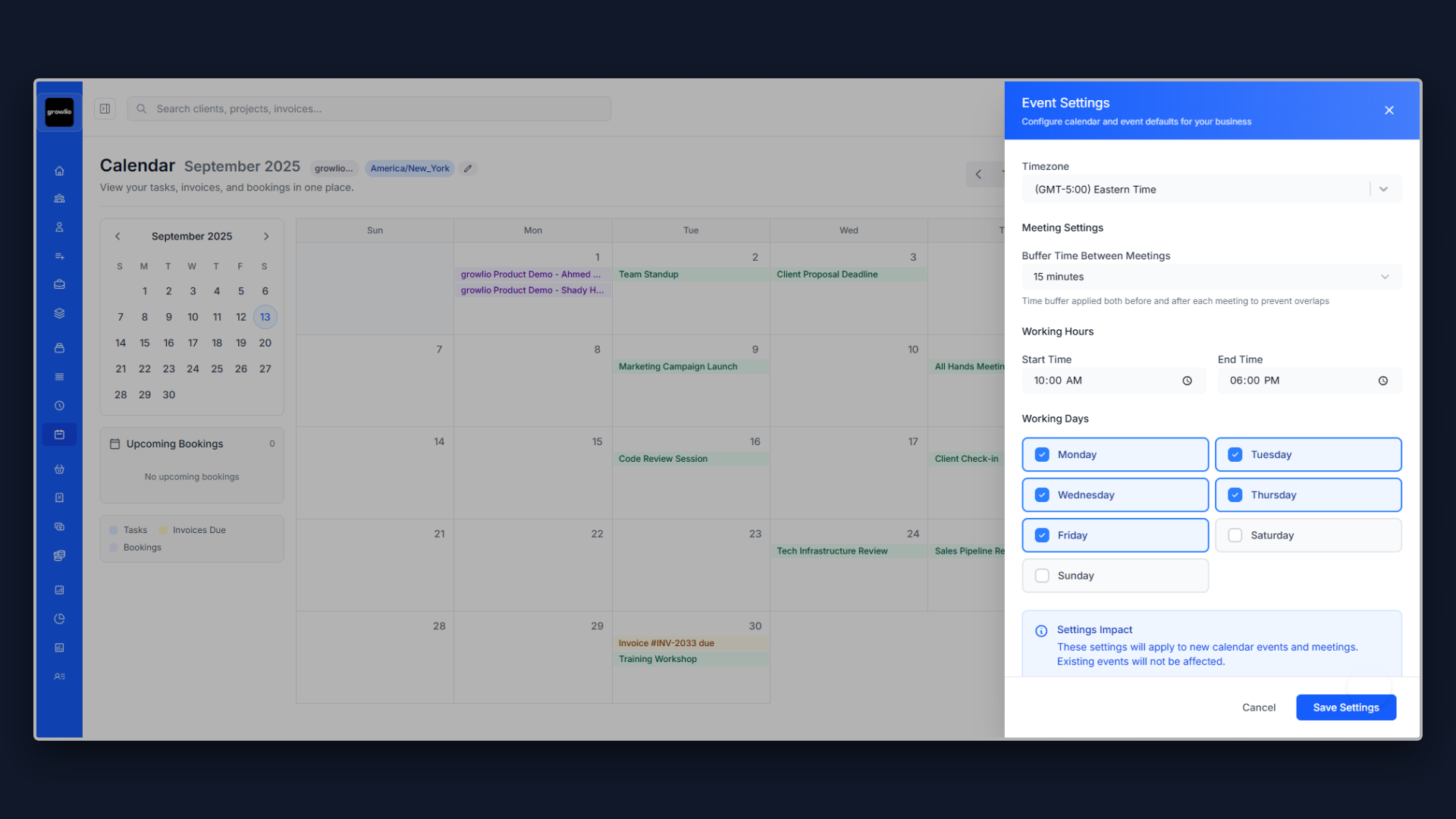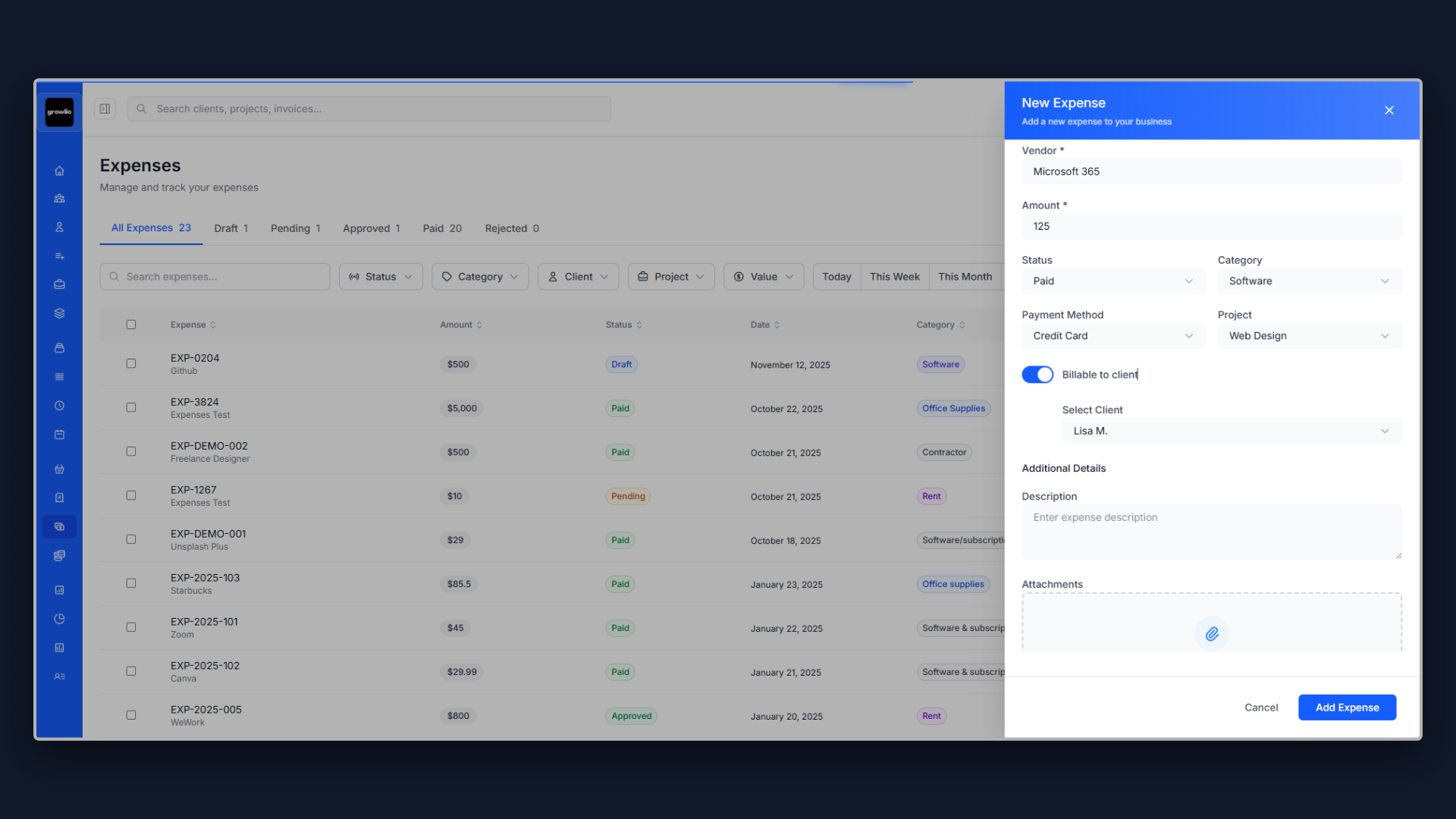Why Your Influencer Marketing Proposal Makes or Breaks Your Business
As an influencer marketing specialist or agency, you know that influencer marketing delivers 11x higher ROI than traditional advertising and that 89% of marketers say influencer marketing ROI is comparable to or better than other channels. But here is the harsh reality: even if you are exceptional at identifying authentic influencers and running successful campaigns, you will struggle to win clients if your proposals do not demonstrate your value clearly.
The influencer marketing industry generates over $21 billion annually, with 67% of brands planning to increase their influencer marketing budgets. Yet many talented influencer marketers lose contracts to competitors who simply write better proposals. This has nothing to do with your influencer relationships and everything to do with how you present them.
Your influencer marketing proposal is your first impression, your sales pitch, and your contract all rolled into one document. It needs to educate prospects who may be skeptical about influencer effectiveness while simultaneously proving you are the expert they need. This is a delicate balance that many get wrong.
1. Start With the Client's Current Influencer Situation, Not Your Services
The biggest mistake influencer marketers make is leading with a list of services: "We offer influencer identification, campaign management, content creation..." Your prospect does not care about your services yet. They care about their problems.
Start your proposal by demonstrating you understand their specific influencer marketing situation. Have they tried influencer marketing with poor results? Are they struggling to reach their target audience through traditional ads? Are competitors successfully using influencers while they are not? Do they lack expertise to identify authentic influencers vs. fake followers? Have they never tried influencer marketing and do not know where to start? Address these pain points explicitly.
For example: "Our analysis shows your current marketing relies heavily on paid ads with declining ROAS (down 32% year-over-year based on industry benchmarks). Meanwhile, your top 3 competitors are running successful influencer campaigns—we have identified 15 influencers in your niche promoting competitor products to highly engaged audiences of 50,000-500,000 followers. Your target audience (millennials and Gen Z aged 25-40) increasingly ignores traditional ads but trusts recommendations from influencers they follow. A strategic influencer marketing program could reach 500,000-2 million qualified prospects organically, generating 200-400 new customers in the first 6 months at a cost-per-acquisition 40-60% lower than paid ads."
This approach immediately shows you have done your homework and understand what is at stake. Now they are ready to hear your solution.
2. Include an Influencer Landscape Audit to Demonstrate Your Expertise
Nothing builds credibility faster than showing you have already researched the influencer landscape in their niche. Include a brief audit section highlighting 3-5 critical insights:
Influencer Opportunity Analysis: Identified 20-30 relevant influencers in your niche with authentic engagement, influencers currently promoting competitor products, underutilized micro-influencers with highly engaged audiences, content gaps where influencer content could fill needs, platform opportunities (Instagram, TikTok, YouTube based on your audience).
Competitive Influencer Activity: Competitors running active influencer campaigns (specific examples), types of collaborations they are doing (sponsored posts, ambassadorships, affiliate), influencer partners competitors are using, engagement and performance of competitor campaigns, opportunities to differentiate your influencer approach.
Audience and Platform Insights: Your target audience most active on specific platforms (Instagram, TikTok, YouTube), content formats that resonate (Stories, Reels, long-form video), influencer tiers most effective for your niche (nano, micro, macro, mega), typical engagement rates in your industry, hashtags and trends relevant to your brand.
Current Strategy Gaps: No existing influencer partnerships or strategy, previous influencer attempts failed due to poor selection or execution, not vetting influencers for fake followers or engagement, no clear campaign goals or success metrics, missing FTC compliance and legal protections.
This mini audit serves multiple purposes: it proves you know what you are doing, it shows research-backed insights, and it makes your proposed solution feel essential rather than optional.
3. Break Down Your Influencer Marketing Process Into Clear Phases
Influencer marketing has specific methodology, but your proposal should not be confusing. Break your process into clear, logical phases.
Phase 1: Strategy & Influencer Discovery (Week 1-2)
Campaign goal setting and KPI definition, target audience and platform analysis, influencer identification and database building, authenticity vetting (fake follower analysis, engagement quality), influencer tier strategy (mix of nano, micro, macro), competitive influencer research, campaign concept and creative direction.
Phase 2: Influencer Outreach & Contracting (Week 2-4)
Personalized outreach to shortlisted influencers, negotiation of rates and deliverables, contract preparation with FTC compliance, content guidelines and brand messaging, timeline and posting schedule coordination, payment terms and structure (flat fee, commission, product exchange).
Phase 3: Campaign Execution & Content Creation (Week 4-8)
Influencer content creation and review, ensuring authentic voice while meeting brand guidelines, FTC disclosure compliance verification, content approval process (typically 48-hour turnaround), coordinated posting according to schedule, real-time monitoring and engagement support, content amplification through your channels.
Phase 4: Measurement & Optimization (Week 8+)
Campaign performance tracking and analytics, engagement rate and reach analysis, conversion tracking and ROI calculation, audience sentiment and comment monitoring, learnings and optimization for future campaigns, influencer relationship nurturing for ongoing partnerships, comprehensive campaign report with recommendations.
This phased approach makes influencer marketing feel manageable and shows you have a proven methodology.
4. Set Realistic Expectations About Campaign Performance and Timeline
One of the fastest ways to lose trust is overpromising results. Clients appreciate honesty about influencer marketing timelines and realistic outcomes.
Be explicit: "Influencer marketing campaigns typically take 4-8 weeks from strategy to execution, depending on influencer response times and content creation schedules. Results become visible as content goes live—unlike traditional campaigns with ramp-up periods, influencer posts generate engagement and conversions immediately. However, building a sustainable influencer program with long-term partnerships takes 3-6 months."
Provide a realistic projection: "Based on your niche and budget, we project: Week 1-2: Strategy development, influencer shortlist of 10-15 authentic creators identified. Week 3-4: Outreach and contracting, 5-8 influencers secured and onboarded. Week 5-6: Content creation and approval, 15-25 pieces of content prepared. Week 7-8: Campaign launch, content goes live, immediate engagement and traffic. Expected campaign results: 500,000-2 million total reach, 3-5% average engagement rate (industry benchmark 1-3%), 1,000-3,000 website visits, 50-150 conversions depending on funnel and product price point."
Address variability: "Influencer marketing performance varies based on influencer authenticity, content quality, audience alignment, and offer attractiveness. We vet carefully and set realistic benchmarks, but some influencers will outperform while others may underperform. Our portfolio approach mitigates risk by working with multiple influencers rather than betting everything on one partnership."
This honesty prevents disappointment and builds trust through transparency.
5. Explain Your Influencer Selection and Vetting Process
Many clients worry about fake followers and influencer fraud. Use your proposal to educate them on your rigorous vetting process.
Explain that effective influencer selection involves: audience alignment (their followers match your target customer precisely), authentic engagement (comments are real conversations, not bots or generic emojis), content quality and aesthetic fit with your brand, values alignment (influencer persona matches your brand values), engagement rate benchmarks (2-5% for macro, 5-10% for micro, 10%+ for nano), follower growth patterns (organic growth vs. suspicious spikes), brand affinity (do they genuinely like products in your category?), and professional reliability (do they meet deadlines and follow contracts?).
Outline your vetting process: "Every influencer goes through rigorous vetting: audience analysis using tools like HypeAuditor or Social Blade, fake follower detection (flag accounts with over 15% fake followers), engagement quality review (reading actual comments to assess authenticity), previous brand partnership analysis (what have they promoted? how did it perform?), content quality and consistency assessment, values and controversy screening (social media history review), rate negotiation and budget fit, reference checks from previous brand partners when possible."
Address fraud prevention: "The influencer industry has significant fraud—studies show 49% of influencers have purchased fake followers. We protect you by: using fraud detection tools that analyze follower quality, prioritizing micro-influencers with highly engaged niche audiences over vanity metrics, looking at engagement rate and quality over raw follower count, starting with test campaigns before large commitments, tracking actual conversions and ROI, not just vanity metrics. We would rather work with an authentic micro-influencer with 10,000 real followers than a fraud with 100,000 fake ones."
6. Address Campaign Strategy and Content Approach
Clients need to understand the creative strategy behind influencer campaigns. Explain your approach to content and messaging.
Explain campaign types: "Different campaign objectives require different influencer strategies: Brand Awareness Campaigns (reach and impressions focus, multiple influencers posting simultaneously, hashtag campaigns), Product Launch Campaigns (coordinated reveals, unboxing content, first impressions and reviews), Sales and Conversion Campaigns (discount codes, affiliate links, time-limited offers), Long-term Ambassadorships (ongoing partnerships, authentic integration over months, deeper brand storytelling), Event Activations (influencer attendance, live coverage, experiential content), User-Generated Content Campaigns (influencer content becomes brand assets for ads and website)."
Outline content guidelines: "We balance brand guidelines with influencer authenticity: providing clear brand messaging and key points to communicate, sharing visual guidelines and product information, allowing influencer creative freedom within guardrails (authentic content performs better), requiring FTC disclosure compliance on all sponsored content, establishing approval process for content before posting, defining deliverables clearly (1 feed post + 3 Stories, etc.). Overly scripted content feels inauthentic and performs poorly—we guide without controlling."
Address platform-specific strategies: "Each platform requires different approaches: Instagram (high-quality static posts, Stories for behind-the-scenes, Reels for maximum reach), TikTok (trending sounds, native-feeling content, entertainment over polish), YouTube (in-depth reviews, tutorials, authentic storytelling), Pinterest (inspirational content, how-to guides, product styling). We tailor content to platform best practices while maintaining brand consistency."
7. Explain Contracts, FTC Compliance, and Legal Protections
Legal compliance is critical in influencer marketing. Show prospects you handle this professionally.
Explain FTC requirements: "The FTC requires clear disclosure of sponsored content—influencer partnerships must be transparent to audiences. We ensure compliance by: requiring prominent hashtags like #ad, #sponsored, or #partner, using platform built-in disclosure tools (Instagram Paid Partnership tag), ensuring disclosures appear above the fold (visible without clicking 'more'), educating influencers on disclosure requirements and consequences, including FTC compliance language in all contracts, monitoring posted content to verify proper disclosure. Non-compliance risks FTC fines and brand reputation damage."
Outline contract protections: "Every influencer partnership includes formal contracts covering: scope of work and specific deliverables, posting schedule and deadlines, content ownership and usage rights, exclusivity clauses (preventing competitor promotion), payment terms and conditions, FTC compliance requirements, termination clauses and recourse, confidentiality and NDA provisions. Contracts protect both you and the influencer."
Address content rights: "We negotiate content usage rights upfront: whitelisting (using influencer content in your paid ads with their permission), content repurposing (using content on your website, emails, social), duration of usage rights (perpetual vs. time-limited), additional compensation for extended usage. User-generated content from influencers is valuable beyond the initial post—we maximize its value through proper rights negotiation."
8. Explain Your Measurement and Analytics Approach
Clients need to understand how you will track and prove ROI. Be specific about metrics and reporting.
Explain influencer marketing metrics: "We track metrics that matter: Reach and Impressions (total audience exposure), Engagement Rate (likes, comments, shares as percentage of reach), Click-Through Rate (traffic driven to your website), Conversions and Sales (tracked via unique codes or affiliate links), Cost Per Engagement (campaign cost divided by total engagements), Cost Per Acquisition (campaign cost divided by conversions), Earned Media Value (estimated value of organic reach), Audience Sentiment (comment and reaction analysis). We focus on business impact, not just vanity metrics."
Outline tracking mechanisms: "We track performance through: unique discount codes for each influencer (tracking conversions directly), UTM parameters and custom landing pages (tracking website traffic and behavior), affiliate links with commission tracking, platform analytics (Instagram Insights, TikTok Analytics), third-party analytics tools (Later, Iconosquare, AspireIQ), pixel tracking for retargeting audiences, post-campaign surveys asking how customers discovered you."
Provide reporting structure: "You will receive campaign reports showing: individual influencer performance (reach, engagement, clicks, conversions), aggregate campaign performance against goals, top-performing content and themes, audience demographics and insights, ROI calculation (revenue generated vs. campaign investment), engagement quality analysis (comment sentiment, share reasons), competitor benchmarking where possible, recommendations for future campaigns. Clear reporting demonstrates value and informs strategy."
9. Address Influencer Compensation and Budget Allocation
Clients need clarity on what influencer marketing costs and how budgets are allocated. Be transparent about pricing.
Explain influencer pricing factors: "Influencer rates vary widely based on: follower count and tier (nano: 1K-10K, micro: 10K-100K, macro: 100K-1M, mega: 1M+), engagement rate (higher engagement commands premium), content type (feed post vs. Story vs. video), platform (YouTube rates higher than Instagram), exclusivity and usage rights, industry and niche, influencer reputation and demand, deliverable quantity and complexity. Rates range from $100-500 for nano-influencers to $10,000-100,000+ for celebrities."
Outline typical budget allocation: "For a $10,000 campaign budget, typical allocation: 60-70% to influencer fees ($6,000-7,000 paying 8-12 micro-influencers), 20-25% to agency management and strategy ($2,000-2,500 for our services), 10-15% to content amplification and tools ($1,000-1,500 for ads, analytics tools). This mix ensures quality influencers while maintaining professional management."
Address payment structures: "Influencer compensation can be structured as: flat fees (fixed payment per deliverable—most common), affiliate commissions (percentage of sales generated), product exchange (sending products for free in exchange for content—works for low-ticket items), hybrid models (small flat fee plus commission), equity or long-term partnerships (rare, for startups and major influencers). We recommend flat fees for predictability and professionalism."
10. Include Case Studies and Proof of Results
Nothing sells like proven results. Include 2-3 relevant influencer marketing case studies showing campaign performance and ROI.
Format them simply: Client: Direct-to-consumer skincare brand. Challenge: Low brand awareness, needed to compete with established brands, limited ad budget. Strategy: Partnered with 15 micro-influencers (20K-80K followers) in beauty and wellness niche, authentic product reviews and skincare routine content, 30-day campaign with 45 total posts. Results: 2.3 million total reach, 4.7% average engagement rate, 12,000 website visits, 380 new customers at $89 average order value, $33,820 revenue generated from $8,500 campaign investment, 3.98x ROI, several influencers became long-term brand ambassadors.
Show content examples: "Include screenshots or links to successful influencer content from previous campaigns (with client permission). Visual proof of quality content and engagement demonstrates your capabilities better than descriptions alone."
Address results transparency: "We are transparent about campaign results—some exceed expectations while others fall short. Our average influencer campaign delivers 2.5-4x ROI, with top campaigns achieving 6-8x ROI. We continuously optimize based on what works, doubling down on high performers and cutting underperformers quickly."
If you are newer to influencer marketing, reference: influencer campaigns managed at previous agencies or employment, personal brand or startup influencer results, case studies from influencer perspective (if you were an influencer yourself), or partnerships you have brokered even if informally.
11. Transparent Pricing That Reflects Value
Influencer marketing pricing varies by campaign scope and influencer tiers. However, vague pricing makes clients nervous.
Provide clear pricing packages: Micro-Influencer Campaign - $5,000: Campaign strategy and influencer selection, 5-8 micro-influencers (10K-50K followers), influencer outreach and contracting, 15-20 pieces of content (mix of posts and Stories), FTC compliance management, campaign tracking and reporting, expected reach: 300K-600K. Growth Influencer Campaign - $12,000: Everything in Micro, plus 10-15 influencers including mix of micro and macro, 30-40 pieces of content across multiple platforms, content amplification through paid promotion, comprehensive analytics and ROI tracking, influencer relationship management for potential ambassadorships, expected reach: 800K-1.5M. Premium Influencer Campaign - $25,000: Everything in Growth, plus 15-20 influencers including 2-3 macro-influencers (100K-500K), 50-60 pieces of high-quality content, multi-platform strategy (Instagram, TikTok, YouTube), user-generated content licensing for ads and website, long-term ambassador identification and retention, dedicated account manager, expected reach: 2M-4M.
Explain what is included: "Our pricing includes: comprehensive influencer vetting and selection, all outreach and negotiation, contract preparation and legal compliance, campaign strategy and creative direction, influencer management throughout campaign, content approval and feedback coordination, performance tracking and analytics, final campaign report with recommendations. Influencer fees are included in package price—no surprises or hidden costs."
Address ongoing programs: "For ongoing influencer programs, we offer monthly retainers starting at $3,000/month including: continuous influencer relationship management, rolling campaigns with 3-5 active influencers monthly, monthly content output and performance tracking, ambassador program development, always-on influencer monitoring and opportunities. Retainers deliver better ROI through sustained presence and relationship building."
12. Make Next Steps Crystal Clear
Do not leave your prospect wondering what happens next. End your proposal with a clear call to action and process.
"Ready to leverage authentic influencer partnerships to reach your target audience and drive measurable sales? Here is how we get started: Step 1: Sign the proposal and return it by [date] with campaign deposit. Step 2: We will schedule a kickoff call within 48 hours to finalize campaign goals and messaging. Step 3: Influencer discovery and outreach begins immediately, with shortlist presented within 1 week. Step 4: Campaign execution begins week 3-4, with content going live and driving results. Questions? Schedule a call with me at [calendar link] or reply to this email."
This removes friction and makes it easy for prospects to say yes. The clearer you make the path forward, the more likely they are to take it.
Final Thoughts on Influencer Marketing Proposals
Your influencer marketing proposal is not just a formality—it is a sales tool, an educational resource, and a trust-building document. The influencer marketers who win the most clients are not always the ones with the biggest influencer networks; they are the ones who best explain influencer marketing strategy and ROI in a way that makes sense to business owners.
Take the time to customize each proposal for your prospect. Reference their current marketing gaps, competitor influencer activity, and specific audience insights. Show that you have done the research. Demonstrate your expertise through an influencer landscape audit and strong case studies with proven ROI. Set realistic expectations about performance and timeline. And make it easy to say yes.
Remember: a great influencer marketing proposal proves you understand their business and target audience, demonstrates you have rigorous influencer vetting and campaign methodology, shows evidence you can deliver authentic partnerships and measurable ROI, and makes the investment feel worthwhile. Get these elements right, and you will win more contracts—even if your competitors have bigger influencer databases or lower prices.
